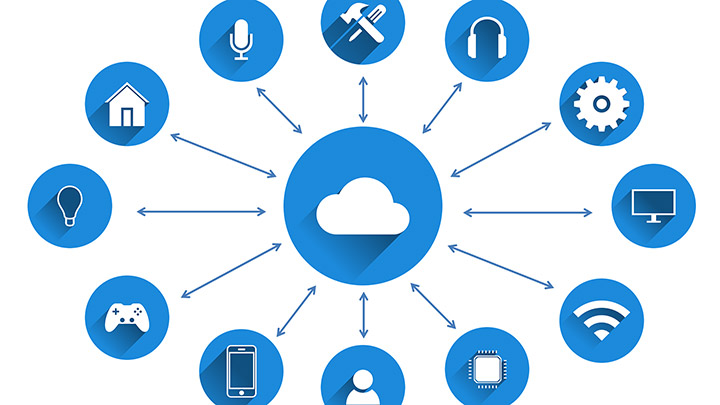In today’s digital landscape, organizations across all industries face growing threats from cyberattacks that can lead to data breaches, financial losses, and reputational damage. As cybercriminals become more sophisticated in their methods, implementing comprehensive cybersecurity measures is no longer optional for businesses – it’s imperative for resilience and survival. Adopting a cybersecurity framework gives organizations a structured approach to managing cyber risks and building robust defenses tailored to their unique environment.
Cybersecurity frameworks establish a common language and best practices that enable organizations to align security programs with business objectives. Core components like control catalogs, implementation tiers, and assessment profiles give organizations the tools to identify assets, conduct risk analysis, implement safeguards, and measure progress over time. Major frameworks like NIST CSF, ISO 27001, and CIS Controls offer guidelines and principles that can be customized based on industry, size, and risk appetite.
By assessing against an established framework, organizations can systematically strengthen their cybersecurity posture while demonstrating due diligence to stakeholders. Ongoing audits and roadmap reviews further integrate the framework to promote continuous improvement. In today’s threat landscape, a cybersecurity framework is the foundation for developing comprehensive strategies that reduce vulnerabilities and enable resilience. With mounting threats, adopting a framework is no longer optional but an essential step for security-conscious organizations across sectors.
Key Components of Cybersecurity Frameworks
Cybersecurity frameworks provide a structured methodology for organizations to manage cyber risks. While specific frameworks have some variations, most share common components that enable effective implementation. Understanding these key elements establishes a solid foundation for building a tailored security program.
Cybersecurity Principles and Controls
At the core of any framework are the foundational principles, guidelines, and controls that drive security activities:
- Principles establish the philosophy and objectives for security programs. Common principles include:
- Confidentiality – Protecting sensitive data from unauthorized access
- Integrity – Safeguarding accuracy and completeness of information
- Availability – Ensuring systems and data are accessible when needed
- Controls provide prescriptive guidance on safeguards that can mitigate risks. Examples include:
- Limiting access through strong authentication and authorization
- Encrypting data at rest and in transit
- Maintaining and testing incident response plans
- Controls are generally grouped into categories aligned to security functions like identity management, data security, and vulnerability management.
- Mapping controls to specific threats informs risk-based priorities for implementation.
Implementation Tiers
Frameworks use tiers to define levels of rigor for security programs:
- Tiers enable benchmarking of the current state and setting a target state.
- Four tiers is a typical structure:
- Partial – Ad hoc, reactive
- Risk-Informed – Prioritizes actions based on risks
- Repeatable – Standardized policies and procedures
- Adaptive – Security evolves with the threat landscape.
- Assessing tier involves evaluating coverage of controls and process formalization.
- Progression to higher tiers indicates greater cybersecurity maturity.

Profiles for Assessment and Tracking
Profiles support assessment against the framework to identify gaps and track improvement:
- A Current Profile captures the organization’s present state.
- A Target Profile defines the desired outcomes.
- Comparing current and target profiles reveals gaps to guide priority actions.
- Profiles are updated periodically to demonstrate security progress.
- They provide an auditable record of control implementation and risk reduction.
These core components enable a flexible approach to managing security risks in alignment with business needs and resources. Frameworks establish a methodology to build customized programs that evolve with the threat landscape.
Overview of Major Cybersecurity Frameworks
Several prominent cybersecurity frameworks provide structured guidance that organizations can leverage to improve security posture. While not exhaustive, three of the most widely adopted frameworks are the NIST Cybersecurity Framework, ISO 27001, and CIS Controls.
NIST Cybersecurity Framework (CSF)
The Cybersecurity Framework was developed by the National Institute of Standards and Technology (NIST) to help organizations manage cyber risks. First published in 2014, it has become one of the most globally recognized frameworks.
Key attributes:
- Uses 5 high-level functions:
- Identify – Develop organizational understanding to manage cyber risks
- Protect – Implement safeguards to ensure the delivery of critical services
- Detect – Develop and implement activities to identify cybersecurity events
- Respond – Take action regarding detected cybersecurity incidents
- Recover – Restore capabilities or services impaired by an incident
- Provides a catalog of common cybersecurity controls as Informative References
- Implementation Tiers define the level of rigor from Partial (Tier 1) to Adaptive (Tier 4)
- Profiles support assessment, target setting, and progress tracking
- Customizable to the organization’s risk appetite and industry
- Widely used by critical infrastructure sectors and companies of all sizes
The CSF delivers a flexible and risk-based approach to cybersecurity. It enables organizations to align security with business requirements, risk tolerances, and resources.
ISO 27001 Information Security Management
ISO 27001 is an information security standard published by the International Organization for Standardization (ISO).
Key aspects:
- Provides requirements for information security management systems (ISMS)
- Certifiable framework with formal audits for certification
- Focuses on comprehensive policies, procedures, and controls
- Based on the Plan-Do-Check-Act model for continuous improvement
- Requires extensive documentation for implementation and auditing
- Used widely internationally across industries
ISO 27001 requires rigorous information security practices. It best suits organizations that benefit from formal certification and can sustain extensive documentation overhead.
CIS Controls and CIS Benchmarks
The Center for Internet Security (CIS) publishes consensus best practice cybersecurity guidelines:
- CIS Controls provide prioritized, prescriptive guidance organized into Basic, Foundational, and Organizational levels
- CIS Benchmarks map controls to specific technologies with tailored recommendations
Key features:
- It covers areas like access management, data protection, asset management
- Benchmarks for cloud platforms, web apps, databases, devices, and more
- Free and licensed versions with expanded content
- Used to secure software, infrastructure, and services
CIS Controls and Benchmarks deliver focused implementation guidance. They provide direct recommendations for securing IT assets and environments.
Comparing Frameworks
| Framework | Approach | Documentation | Industry Adoption |
| NIST CSF | Flexible, risk-based | Moderate | Very high |
| ISO 27001 | Rigorous, auditable | Extensive | High |
| CIS Controls | Prescriptive guidance | Light | Moderate |
These major frameworks provide a range of approaches to suit different organizational needs and sectors. They can also complement each other – for example, by mapping CIS Controls to NIST CSF. Adopting a framework establishes the foundation for an effective, tailored security program.

Industry-Specific Cybersecurity Frameworks
Besides broadly applicable frameworks like NIST, ISO 27001, and CIS Controls, some industries have specialized frameworks tailored to their unique environments and regulations.
HIPAA Security Rule
The Health Insurance Portability and Accountability Act (HIPAA) Security Rule establishes mandatory cybersecurity standards for healthcare organizations.
Key aspects:
- Legally required for covered entities like hospitals, insurers, clinics
- Focuses on protecting patient health information (PHI)
- Requires risk analysis and risk management process
- Addresses areas like access control, training, and incident response
- Enforced by The Office for Civil Rights (OCR)
Core requirements:
- Administrative safeguards – Policies, training, contingency planning
- Physical protection – Facility access controls, device security
- Technical safeguards – Access control, audit controls, encryption
The HIPAA Security Rule provides prescriptive guidance to secure PHI and ensure patient privacy.
PCI DSS
The Payment Card Industry Data Security Standard (PCI DSS) applies to any entity that processes, stores, or transmits cardholder data.
Key characteristics:
- Global standards managed by the PCI Security Standards Council
- Required for merchants, processors, software vendors, etc
- Focuses on protecting cardholder data
- Covers 12 core requirements like firewalls, access control, encryption
- Requires vulnerability scans, penetration testing, incident response
PCI DSS controls are organized into 6 domains:
- Build and Maintain a Secure Network
- Protect Cardholder Data
- Maintain a Vulnerability Management Program
- Implement Strong Access Control Measures
- Regularly Monitor and Test Networks
- Maintain an Information Security Policy
Achieving and maintaining PCI DSS compliance is mandatory for any entity handling credit card data.
NERC CIP
The North American Electric Reliability Corporation (NERC) Critical Infrastructure Protection (CIP) standards apply to bulk electric system owners and operators.
Key aspects:
- Mandatory standards for grid reliability and security
- Covers both cyber and physical security
- Focuses on high and medium-impact assets
- Requirements for asset management, access control, monitoring, incident response
Major requirements areas:
- Cybersecurity awareness and training
- Physical and electronic access management
- Vulnerability and threat management
- Incident response readiness and planning
- Recovery plans for cyber assets
NERC CIP provides electric utilities with cybersecurity and physical protections crucial for critical infrastructure.
Industry frameworks build on general frameworks while adding requirements specialized for sector needs. They guide the following security best practices and achieve regulatory compliance.
Implementing a Cybersecurity Framework
Adopting a cybersecurity framework provides the foundation for a robust security program, but effective implementation is key to reducing risk over time. Ongoing assessments, roadmap planning, and integrating the framework into operations enable continuous enhancement of cyber defenses.
Performing Assessments and Audits
Assessing the organization’s current practices against the chosen framework establishes a baseline for improvement.
- Conducting an initial assessment identifies security gaps based on the framework’s controls and profiles.
- Regular internal audits measure progress in addressing gaps and improving capabilities.
- External audits by accredited third parties provide independent benchmarking against framework standards.
- ISO 27001 requires formal certification audits by accredited auditors for organizations seeking certification.
- Audit results provide visibility into the security posture for leadership and stakeholders.
- Assessment findings inform strategic roadmap and initiatives.
Sample Audit Areas
- Incident response planning and testing
- Vulnerability and patch management
- Access control policies and procedures
- Security awareness training completion
- Compliance with data retention policies
Building a Cybersecurity Roadmap
A roadmap outlines the initiatives, resources, and timeline needed to improve cybersecurity posture over time.
- The framework, audit results, and risk assessments drive the roadmap.
- It defines priority focus areas and projects based on risk reduction value.
- Key inputs into roadmap planning include:
- Risk assessment of threats, vulnerabilities, and impacts
- Current vs. target state gaps
- Available budget and resources
- Organizational change capacity
- The roadmap sequences the implementation of controls and projects over multiple years.
- It is updated periodically based on audit findings, evolving threats, and completed initiatives.
Integrating Frameworks into Operations
It should be ingrained into security operations and culture to leverage a framework fully.
- Incorporate framework principles, controls, and language into policies, procedures, and training.
- Use framework structure and taxonomy for classifying rules and assets.
- Leverage framework criteria for security tool selection.
- Maintain framework assessment discipline through regular audits and roadmap reviews.
- Promote framework methodology and best practices organization-wide.
- Tie framework practices into personnel performance metrics.
Integrating a framework’s methodology establishes the foundation for a mature, risk-aware security program that continuously improves.
Key Takeaways
- Cybersecurity frameworks provide structure for managing cyber risks
- Core components include controls, tiers, and profiles for assessment
- Major frameworks like NIST CSF, ISO 27001, and CIS Controls offer best practices
- NIST CSF is flexible and risk-based, ISO 27001 auditable, CIS Controls prescriptive
- Industry frameworks like HIPAA, PCI DSS, and NERC CIP meet sector regulations
- Assessments identify gaps, roadmaps drive strategic improvements
- Integrating framework builds risk-aware culture and maturity over time
- Frameworks enable security tailored to the organization’s environment
- Adopting a framework establishes the foundation for cyber resilience
Enhance Your Cybersecurity Posture with ZZ Servers
Cyber threats are growing daily, but with the right partner, you can protect your Virginia business.
For over 17 years, ZZ Servers has delivered:
- Managed IT services
- Cybersecurity solutions
- Technology support and strategy
With deep expertise across industries, we can assess your environment against cybersecurity frameworks and standards to:
- Identify security gaps
- Build a strategic roadmap
- Implement controls tailored to your business
Our team keeps your systems safe 24/7 while you focus on operations.
Don’t wait – a breach can cripple small businesses. Call ZZ Servers at 800-796-3574 to schedule a free consultation.
Our cybersecurity professionals serve Hampton Roads businesses with accountability and compassion. Partner with us for IT excellence and cyber resilience.
Frequently Asked Questions
What are cybersecurity frameworks?
Cybersecurity frameworks provide guidelines, controls, and best practices that help organizations manage cyber risks. They establish a common language around security and enable assessments, audits, and benchmarking. Major frameworks include NIST CSF, ISO 27001, and CIS Controls.
Why should organizations adopt a framework?
Frameworks help align security with business goals, conduct risk analysis, implement controls, and track progress over time. They facilitate regulatory compliance and communication with stakeholders about security posture.
What are the key components of frameworks?
Core components include foundational principles, catalogs of controls, implementation tiers or maturity models, and assessment profiles used for audits and progress tracking.
What are some major industry-specific frameworks?
Key industry frameworks are HIPAA for healthcare, PCI DSS for payment card data, and NERC CIP for electric utilities. They add specialized requirements for sector regulations.
How do organizations implement a framework successfully?
Effective implementation requires assessing gaps, creating a roadmap to improve over time, and integrating the framework into policies, processes, and culture.


